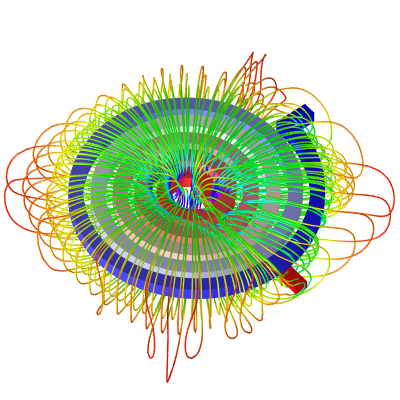Yup, I was checking out leeborg’s other post. I’m familiar with her project.
@Leeborg
You might not want to do a flex PCB, because of the limitations Amal described. You would have to lay the spiral antenna over top of your implant to get it to couple well (which would block the light and defeat the point). Here is a simulation of the magnetic field generated by a spiral coil:
See the green part of the flux lines? That’s area with the greatest flux density in parallel with the coil in the xLED. You could imagine it like each flux line was the trajectory of a ball being tossed up in the air. The ball never reaches escape velocity (where it would become an RF signal) so it inevitably has to fall back down to the “gravity” of the center of the coil. I really doubt the red parts of the field would power your xLED.
What might work better is a wirewound cylindrical coil shaped like this:
That way you could situate the coil next to or above the xLED and still get pretty good coupling, without covering up the light.

